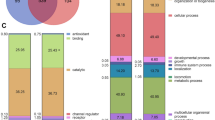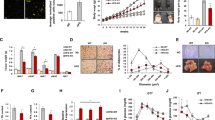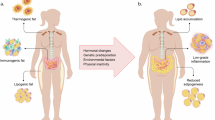Abstract
OBJECTIVE: The primary aim was to investigate the relative importance of the adipocytes vs the nonfat cells present in human adipose tissue with respect to release of immunoreactive tumor necrosis factor-α (TNFα). The second aim was to examine the correlation between body mass index (BMI) and the subsequent release of adiponectin and TNFα by explants of human subcutaneous and visceral adipose tissue incubated in primary culture for 48 h.
RESULTS: We found that the maximal release of TNFα was seen during the first 4 h of a 48-h incubation by explants of human adipose tissue in primary culture. Over 95% of the TNFα released to the medium by human adipose tissue explants over a 4-h incubation came from the nonfat cells present in the adipose tissue. The release of TNFα by the nonfat cells released during collagenase digestion was slightly higher than that by the cells present in the adipose tissue matrix after collagenase digestion. TNFα release by the combined matrix and isolated nonfat cells was greater than that by explants of tissue indicating some upregulation induced by collagenase digestion. Immunoreactive TNFα disappeared from the medium with a half-time of approximately 10 h. There was a positive correlation coefficient of 0.79 between TNFα release by tissue explants and the BMI of the fat donors as well as a correlation of 0.52 between BMI and release by adipocytes. TNFα release negatively correlated [−0.60] with adiponectin release by adipose tissue. The release of TNFα was far less than that of adiponectin or IL-6, and less than that of plasminogen activator inhibitor-1, hepatocyte growth factor, or leptin over a 4-h incubation of human adipose tissue explants. TNFα release over 4 h was enhanced by lipopolysaccharide and inhibited by a cyclooxygenase-2 inhibitor.
CONCLUSION: The release of TNFα by adipose tissue of obese humans is primarily due to the nonfat cells present in adipose tissue. TNFα is a short-lived adipokine whose release by human adipose tissue in primary culture correlates with the BMI of the fat donors.
This is a preview of subscription content, access via your institution
Access options
Subscribe to this journal
Receive 12 print issues and online access
$259.00 per year
only $21.58 per issue
Buy this article
- Purchase on SpringerLink
- Instant access to full article PDF
Prices may be subject to local taxes which are calculated during checkout





Similar content being viewed by others
References
Hotamisligil GS, Arner P, Caro JF, Atkinson RL, Spiegelman BM . Increased adipose tissue expression of tumor necrosis factor-α in human obesity and insulin resistance. J Clin Invest; 1995; 95: 2409–2415.
Bruun JM, Pedersen SB, Kristensen K, Richelsen B . Opposite regulation of plasma interleukin-8 and tumor necrosis factor-α by weight loss. Obes Res; 2002; 10: 499–506.
Dandona P, Weinstock R, Thusu K, Abdel-Rahman E, Aljada A, Wadden T . Tumor necrosis factor-a in sera of obese patients: fall with weight loss. J Clin Endocrinol Metab; 1998; 83: 2907–2910.
Zahorska-Markiewicz B, Janowska J, Olszanecka-Glinianowicz M, Zurakowski A . Serum concentrations of TNF-α and soluble TNF-α receptors in obesity. Int J Obes Relat Metab Disord; 2000; 24: 1392–1395.
Laimer M, Ebenbichler CF, Kaser S, Sandhofer A, Weiss H, Nehoda H, Aigner F, Patsch JR . Markers of chronic inflammation and obesity: a prospective study on the reversibility of this association in middle-aged women undergoing weight loss by surgical intervention. Int J Obes Relat Metab Disord; 2002; 26: 659–662.
Yudkin JS, Stehouwer CDA, Emeis JJ, Coppack SW . C-reactive protein in healthy subjects: associations with obesity, insulin resistance and endothelial dysfunction: a potential role for cytokines originating from adipose tissue? Arterioscler Thromb Vasc Biol; 1999; 19: 972–978.
Berberoglu M . Evaluation of the correlation between serum tumor necrosis factor-alpha and relative body mass index (RBMI) in childhood. J Pediatr Endocrinol Metab; 2001; 14: 543–547.
Pincelli AI, Brunani A, Scacchi M, Dubini A, Borsotti R, Tibaldi A, Pasqualinotto L, Maestri E, Cavagnini F . The serum concentration of tumor necrosis factor alpha is not an index of growth-hormone- or obesity-induced insulin resistance. Horm Res; 2001; 55: 57–64.
Kern PA, Ranganathan S, Li C, Wood L, Ranganathan G . Adipose tissue tumor necrosis factor and interleukin-6 expression in human obesity and insulin resistance. Am J Physiol Endocrinol Metab; 2001; 280: E745–E751.
Kern PA, Saghizadeh M, Ong JM, Bosch RJ, Deem R, Simsolo RB . The expression of tumor necrosis factor in human adipose tissue: regulation by obesity, weight loss, and relationship to lipoprotein lipase. J Clin Invest; 1995; 95: 2111–2119.
Bullo M, Garcia-Lorda P, Peinado-Onsurbe J, Hernandez M, Castillo DD, Argiles JM, Salas-Salvado J . TNFα expression of subcutaneous adipose tissue in obese and morbid obese females: relationship to adipocyte LPL activity and leptin synthesis. Int J Obes Relat Metab Disord; 2002; 26: 652–658.
Mohamed-Ali V, Goodrick S, Bulmer K, Holly JM, Yudkin JS, Coppack SW . Production of soluble tumor necrosis factor receptors by human subcutaneous adipose tissue in vivo. Am J Physiol; 1999; 277: E971–E975.
Lofgren P, van Harmelen V, Reynisdottir S, Naslund E, Ryden M, Rossner S, Arner P . Secretion of tumor necrosis factor-α shows a strong relationship to insulin-stimulated glucose transport in human adipose tissue. Diabetes; 2000; 49: 688–692.
Sewter CP, Digby JE, Blows F, Prins J, O'Rahilly S . Regulation of tumour necrosis factor-alpha release from human adipose tissue in vitro. J Endocrinol; 1999; 163: 33–38.
McTernan PG, Harte AL, Anderson LA, Green A, Smith SA, Holder JC, Barnett AH, Eggo MC, Kumar S . Insulin and rosiglitazone regulation of lipolysis and lipogenesis in human adipose tissue in vitro. Diabetes; 2002; 51: 1493–1498.
Gesta S, Lolmede K, Daviaud D, Berlan M, Bouloumie A, Lafontan M, Valet P, Saulnier-Blache JS . Culture of human adipose tissue explants leads to profound alteration of adipocyte gene expression. Horm Metab Res; 2003; 35: 158–163.
Hotamisligil, GS, Shargill NS, Spiegelman BM . Adipose expression of tumor necrosis factor-α: direct role in obesity-linked insulin resistance. Science; 1993; 259: 87–91.
Beutler B, Cerami A . Tumor necrosis, cachexia, shock, and inflammation: a common mediator. Annu Rev Biochem; 1988; 47: 505–518.
Diez JJ, Iglesias P . The role of the novel adipocytes-derived hormone adiponectin in human disease. Eur J Endocrinol; 2003; 148: 293–300.
Matsubara M, Maruoka S, Katayose S . Inverse relationship between plasma adiponectin and leptin concentrations in normal-weight and obese women. Eur J Endocrinol; 2002; 147: 173–180.
Esposito K, Pontillo A, Di Palo C, Giugliano G, Masella M, Marfella R, Giugliano D . Effect of weight loss and lifestyle changes on vascular inflammatory markers in obese women. JAMA; 2003; 289: 1799–1804.
Kern PA, Di Gregorio BB, Lu T, Rassouli N, Ranganathan G . Adiponectin expression from human adipose tissue; relation to obesity, insulin resistance and tumor necrosis factor-α expression. Diabetes; 2003; 52: 1779–1854.
Fawcett RL, Waechter AS, Williams LB, Zhang P, Louie R, Jones R, Inman M, Huse J, Considine RV . Tumor necrosis factor-α inhibits leptin production in subcutaneous and omental adipocytes from morbidly obese humans. J Clin Endocrinol Metab; 2000; 85: 530–535.
Gottschling-Zeller H, Birgel M, Scriba D, Blum WF, Hauner H . Depot-specific release of leptin from subcutaneous and omental adipocytes in suspension culture: effect of tumor necrosis factor-alpha and transforming growth factor-beta1. Eur J Endocrinol; 1999; 141: 436–442.
Ruan H, Lodish HF . Insulin resistance in adipose tissue: direct and indirect effects of tumor necrosis factor-alpha. Cytokine Growth Factor Rev; 2003; 14: 447–455.
Dusserre E, Moulin P, Vidal H . Differences in mRNA expression of the proteins secreted by the adipocytes in human subcutaneous and visceral adipose tissues. Biochim Biophys Acta; 2000; 1500: 88–96.
Fain JN, Cheema PS, Bahouth SW, Hiler ML . Resistin release by human adipose tissue explants in primary culture. Biochem Biophys Res Commun; 2003; 300: 674–678.
Hartman HB, Hu X, Tyler KX, Dalal CK, Lazar MA . Mechanisms regulating adipocyte expression of resistin. J Biol Chem; 2002; 277: 19754–19761.
Kim K-H, Lee K, Moon YS, Sul HS . A cysteine-rich adipose tissue-specific secretory factor inhibits adipocyte differentiation. J Biol Chem; 2001; 276: 11252–11256.
Nagaev I, Smith U . Insulin resistance and type 2 diabetes are not related to resistin expression in human fat cells or skeletal muscle. Biochem Biophys Res Commun; 2001; 285: 561–564.
Savage DB, Sewter CP, Klenk ES, Segal DG, Vidal-Puig A, Considine RV, O'Rahilly S . Resistin/Fizz3 expression in relation to obesity and peroxisome proliferator-activated receptor-γ action in humans. Diabetes; 2001; 50: 2199–2202.
Xu H, Uysal KT, Becherer JD, Arner P, Hotamisligil GS . Altered tumor necrosis factor-alpha (TNF-alpha) processing in adipocytes and increased expression of transmembrane TNF-alpha in obesity. Diabetes; 2002; 51: 1876–1883.
Viviani B, Corsini E, Pesenti M, Galli CL, Marinovich M . Trimethyltin-activated cyclooxygenase stimulates tumor necrosis factor-alpha release from glial cells through reactive oxygen species. Toxicol Appl Pharmacol; 2001; 172: 93–97.
Fennekohl A, Sugimoto Y, Segi E, Maruyama T, Ichikawa A, Puschel GP . Contribution of the two Gs-coupled PGE2-receptors EP2-receptor and EP4-receptor to the inhibition by PGE2 of the LPS-induced TNFalpha-formation in Kupffer cells from EP2- or EP4-receptor-deficient mice. Pivotal role for the EP4-receptor in wild type Kupffer cells. J Hepatol; 2002; 36: 328–334.
Dooper MM, Wassink L, M'Rabe L, Graus YM . The modulatory effects of prostaglandin-E on cytokine production by human peripheral blood mononuclear cells are independent of the prostaglandin subtype. Immunology; 2002; 107: 152–159.
Acknowledgements
This study was supported by the Van Vleet Chair of Excellence and the Vascular Biology Center of the University of Tennessee College of Medicine. We are indebted to Paramjeet Cheema for skilled technical assistance.
Author information
Authors and Affiliations
Corresponding author
Rights and permissions
About this article
Cite this article
Fain, J., Bahouth, S. & Madan, A. TNFα release by the nonfat cells of human adipose tissue. Int J Obes 28, 616–622 (2004). https://doi.org/10.1038/sj.ijo.0802594
Received:
Revised:
Accepted:
Published:
Issue Date:
DOI: https://doi.org/10.1038/sj.ijo.0802594
Keywords
This article is cited by
-
Association between visceral obesity and tumor recurrence in hepatocellular carcinoma recipients undergoing liver transplantation
International Journal of Obesity (2023)
-
Breast cancer microenvironment and obesity: challenges for therapy
Cancer and Metastasis Reviews (2022)
-
Camellia sinesis leaves extract ameliorates high fat diet-induced nonalcoholic steatohepatitis in rats: analysis of potential mechanisms
Journal of Pharmaceutical Investigation (2021)
-
YAP and TAZ protect against white adipocyte cell death during obesity
Nature Communications (2020)
-
Adipokines secretion in feline primary adipose tissue culture in response to dietary fatty acids
BMC Veterinary Research (2019)



